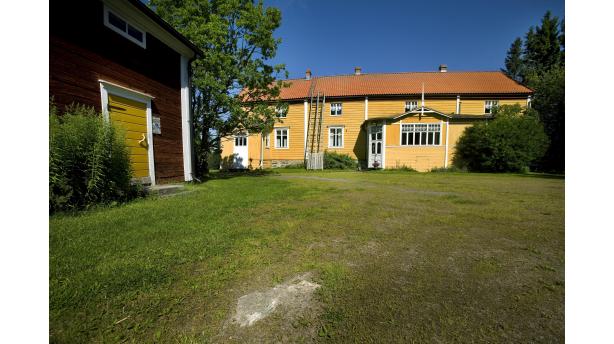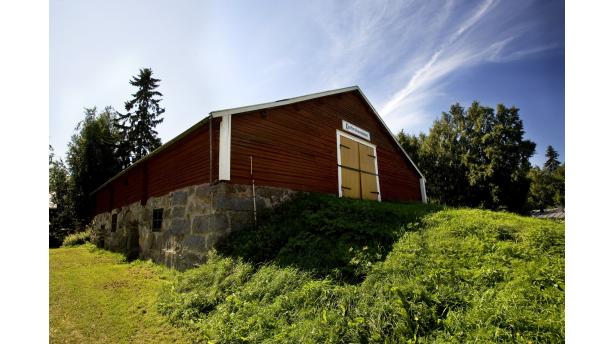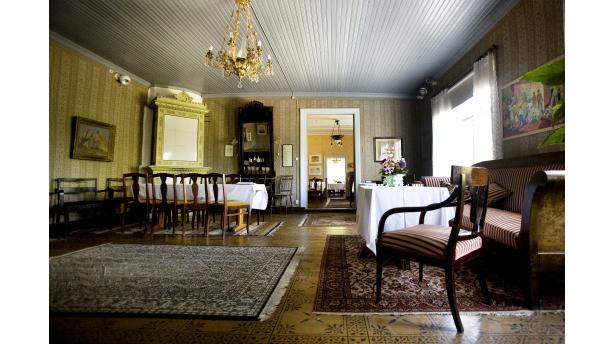Museum A-Ö » Religion and society » Torgare vicarage
Torgare vicarage
- Rural life and craft
- Religion and society
- Historical people and places
- Wars and wartime
- For children and the childlike



Did you know...
The well-known Swedish botanist Carl von Linné visited the vicarage in the beginning of the 18th century and mentions the vicarage in his memoirs.
The Torgare Vicarage has for centuries been the cultural centre of Kronoby, and there are many various destinies connected to it. The atmospheric milieu offers the visitor the possibility to take a peep inside the home of a ministerial family as well as the toils of country life and the dangers of wartime. In the summer and winter diverse activity and events are organized in this beautiful surrounding.
The Torgare Vicarage was built in 1796, but it has been suggested, that the cellar originates from the 17th century, when Kronoby received its first vicar. The elegant interior decoration shows, what the home of a ministerial family might have looked like in the old time. In some of the side chambers are various theme exhibitions. The area has to a large extent remained the same since the 1850s, when the vicarage was expanded.Many historical people have connections with the vicarage. In one of the attic chambers is a memorial room for the “father of Finnish historiography” Henrik Gabriel Porthan, who spent ten years of his childhood at his uncle’s, vicar Gustaf Juslenius’, home. In another chamber is displayed folk dance and in the third one is an army museum with for instance uniforms from the Finnish war and costumes of members of the Lotta Svärd Organization. The Lotta Svärd Organization had strong roots in Kronoby. The dugout and the trench built by local war veterans form a thrilling partition in the museum area. Near the dugout is displayed a cannon originating from the time of the Second World War.
The vicarage used to be an exemplar for the local peasants in terms of adopting new tools, agricultural methods and domestic animal breeds. There was for instance a henhouse already in 1738 in Torgare, even though chicken yards were quite rare in Ostrobothnia in the 18th century. Extensive farming was usually practised in the vicarages, which is why the agrarian museum fits well in the old cowshed dating back to the early 19th century. In the museum can be found the customary horses’ harnesses, the tools, the ploughs and wagons, but also some less ordinary items, such as old tractors, a sealing boat and hearses.
Children should be interested in the school museum, where a turn-of-the-century classroom has been reconstructed with walls bending with educational illustrations and shelves filled with worn-out schoolbooks from the old primary schools of Kronoby. In the same building is situated a baking cabin giving off a lovely whiff of freshly baked rye bread, when the oven is used in connection with different events.
In February a Runeberg festival is arranged in the vicarage. According to tradition Runeberg spent many summers of his youth in the vicarage together with the sons of vicar Fredrik Juvelius and especially with his daughter Fredrika. The birch lane or the “love path” where Runeberg and Fredrika Juvelius used to walk hand in hand still exists today. A summer festival is organized in July with speeches, soup and coffee. In addition to events like these, the vicarage can be rented for example for weddings or birthday parties.


